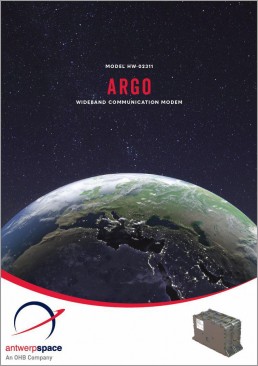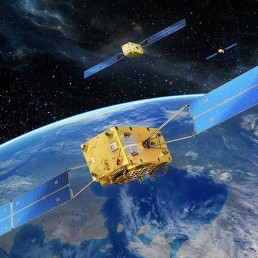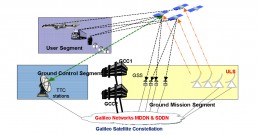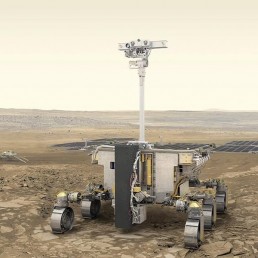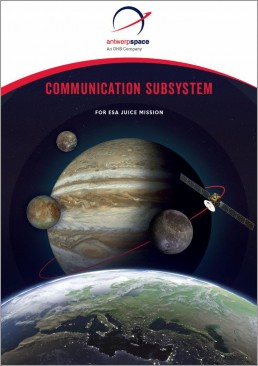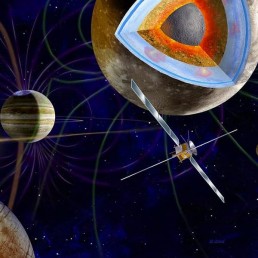Broadband Communication for ISS
ARGO, a highly innovative modem
Antwerp Space developed ARGO, a highly innovative modem. MacDonald, Dettwiler and Associates Ltd. (MDA) integrated this modem into a space-borne new-generation communication terminal.
International Space Station: an ideal testbed
ARGO was deployed for the first time in 2019. In February 2020, the communication terminal has been launched to the International Space Station (ISS). An ESA astronaut will mount the terminal on the exterior of the European Columbus module of the ISS in 2021.
Thanks to ARGO, ESA astronauts staying on the ISS can rely on European technology. This technology transmits more science data and ensures higher quality live streaming from the station.
The ISS represents an ideal testbed for this new technology. Nevertheless, the target market goes far beyond the ISS alone. It includes any operator of satellites orbiting around the Earth at low altitude.
Argo: direct communication at all times
Indeed, ARGO enables direct communication between spacecraft and satellites:
- flying in the Low Earth Orbit (typically < 1.000 km)
- and communication satellites orbiting the Earth at a much higher altitude (about 36.000 km).
Nowadays satellites in low orbit typically need to pass almost vertically above a ground station for establishing a connection and exchanging data. In the future, satellites in low orbit no longer need to be visible from the ground to communicate. Thanks to the technology offered by ARGO, they can use telecommunication satellites as relays. They will access any ground station at almost any given time, thus providing near real-time data to the operators.
Our involvement
The main innovative aspect of the ARGO modem developed by us lies in the integrated circuit, called a field-programmable gate array or FPGA. This FPGA allows a remote upgrade and the transmission at higher speed of more information (‘bits’).
Also, a modem with this state-of-the-art FPGA consumes less power, has smaller dimensions and a lower mass. Of course, those are all important advantages in space.
We build our innovative modem thanks to the financial support of the ARTES programme of ESA and with support of BELSPO.
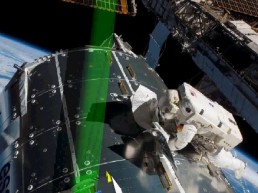
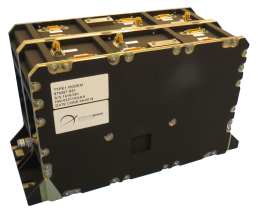
Timeline
- Q1 2017: Start of the ARGO modem MAIT activities in Antwerp Space’s new clean room
- Q1 2019: Delivery of the flight modem to the customer MDA
- Q1 2020: Launch of the ARGO Modem to the ISS
Galileo
The European Union has decided to establish its own global navigation system Galileo. The system will comprise various ground stations and a set of 30 navigation satellites.
The constellation comprises up to 30 satellites in three planes. One of the satellites in each plane serves as a spare.
The constellation is optimized allowing a global position determination and navigation. In addition, the satellites support a global Search and Rescue service (COSPAS-SARSAT).
Our involvement
Antwerp Space was the main contractor in charge of the delivery of the communication networks supporting the operation of the Galileo system: the Mission Data Dissemination Network (MDDN) and the Satellite Data Dissemination Network (SDDN), delivered to their segment prime contractors, respectively Thales Alenia Space France (MDDN) and Astrium UK (SDDN).
These critical networks ensure a highly reliable and real-time connectivity between all remote ground stations and the two redundant Galileo Control Centers located in Germany and Italy. Antwerp Space has been in charge of the design, development, integration and deployment of the networks. The main achievement under the FOC activity was the expansion of the number of Galileo network sites totaling to date more than 30 locations around the world, spread from Kiruna to Kerguelen, including OHB in Bremen. Since the network supports satellite operations, very tight time constraints are imposed on network upgrades. The network activity included the production of 170 racks, made up of more than 5000 COTS equipment, set-up by ~15.000 configuration files. The representative network integration and maintenance platform in Antwerp Space includes 40 interconnected racks. These FOC network activities have been delivered within the originally agreed schedule.
Exobiology on Mars
ExoMars (Exobiology on Mars) is a Space programme consisting of two missions to orbit around and land on Mars.
It’s a cooperation between ESA and Roscosmos, the Russian space agency.
Antwerp Space is responsible for the designing, integrating and testing the complete communication subsystem of the ExoMars 2020 Carrier Module.
What’s in a spacecraft
Spacecraft are typically split into different subsystems, for example propulsion, payload or communication. They are assembled and integrated together under the responsibility of the prime contractor. OHB – the umbrella organization of Antwerp Space – is one of three European companies able to integrate large satellites.
Each subsystem of a large spacecraft is built following the same pattern:
- A subsystem integrator assembles and integrates different units.
- The subsystem integrator lets the units work together smoothly.
- Those units are provided by a variety of suppliers.
Two missions to the Red Planet
ExoMars 2016 and ExoMars 2020 are the two missions to orbit and land on Mars. The first mission ExoMars 2016 – with an orbiter and a lander on board – was launched on 14 March 2016 and arrived in October 2016. The second mission is scheduled for 2020. Its surface platform will actually land on the planet and a rover will explore the Martian surface.
Our involvement
Antwerp Space was selected to be the communication subsystem integrator for the Carrier Module. This enables the teams on Earth to send commands to the spacecraft during the whole duration of the flight of ExoMars 2020 to Mars.
Antwerp Space is responsible for designing, integrating and testing the complete communication subsystem of the ExoMars 2020 Carrier Module. The detailed design and manufacturing of the different units is subcontracted to different companies in Europe. That happened via the ESA best practices approach, lead by Antwerp Space.
We are also engaged to the delivery of the Carrier Module Electrical Ground Support Equipment (EGSE). The EGSE includes two X-Band RF SCOEs developed by Antwerp Space. It’s an essential element to test the proper operation of all the Carrier Module’s subsystems on ground before the launch.
Thanks to this important contract, Antwerp Space is establishing itself as a trustful and reliable partner. One able to participate to a higher system level than equipment design. Finally, Antwerp Space will also contribute the instrument for one of the two European Scientific experiments on board the surface platform, LaRa.
LaRa: our testimony of expertise
Our Lander Radioscience (LaRa) is the first scientific instrument made in Belgium to ever land on the surface of Mars. It’s part of the ExoMars 2020 Mission. The LaRa instrument will receive a radio signal sent from Earth and beam it back from the Mars surface.
First scientists analyse the characteristics of the radio signal received on Earth. Then they’re able to measure the planet’s rotation with an unprecedented accuracy, thus inferring the characteristics of its interior. Overall, LaRa helps us understand the internal structure of Mars. And why Mars and the Earth did not evolve similarly.
On top of that, the data gathered by LaRa allows us to investigate the influence of the redistribution of masses. For example: the migration of ice from the polar caps to the atmosphere and its impact on the rotation of Mars.
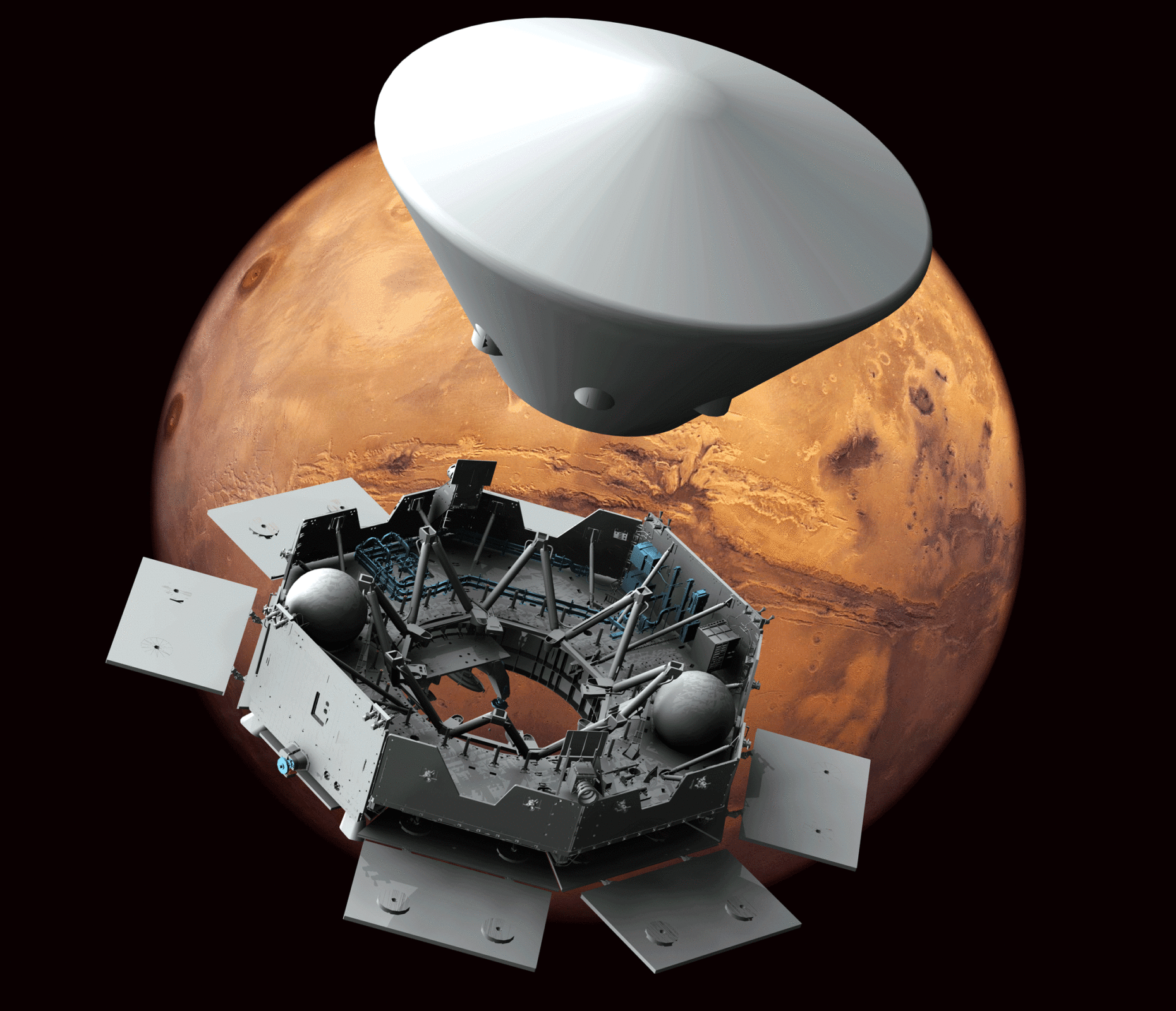
Timeline
- 2014: Antwerp Space is awarded a contract for building the communication subsystem of the ExoMars carrier module.
- 2018: Delivery of the subsystem to Roscosmos
- 2020: Launch of the ExoMars 2020 mission on Russian rocket
- 2021: Landing of ExoMars 2020
JUpiter ICy Moons Explorer
JUICE (JUpiter ICy moons Explorer) is the first large-class mission of Cosmic Vision 2015-2025, a programme of the European Space Agency (ESA).
The JUICE spacecraft provides a thorough investigation of the Jovian system in all its complexity.
Jupiter's Icy Moons
The emphasis here is on three of its largest, icy moons: Ganymede, Europa and Callisto. The JUICE spacecraft also looks at the potential habitability of two of them. It will be the first spacecraft ever to orbit a moon (Ganymede) of a giant planet.
The scientific instruments on board of the spacecraft perform local measurements of Jupiter’s atmosphere and plasma environment. They also make remote observations of the surface and interior of the three icy moons.
JUICE: the electrical power of a micro-wave oven
The total generated electrical power of the JUICE spacecraft is less than 1000 Watt. That’s only as much as a micro-wave oven. Furthermore, with a signal power comparable with that of a light-bulb it provides a daily downlink of at least 1.4 Gb.
Our involvement
Antwerp Space is responsible for designing, integrating and testing the complete communication subsystem. We also supervise the subcontracting of the detailed design and manufacturing of the different units to companies in Europe.
Lots of challenges
The communication subsystem enables the communication link with Earth during the JUICE mission. The large distance of Jupiter to Earth – 588 to 968 million km – results in a signal round trip time of up to 1h 46 m. Of course, that complicates spacecraft operations.
Furthermore, Jupiter has a very harsh radiation environment. The protection of sensitive electronic equipment is required. That’s why the communication subsystem transponder is shielded within a metal vault.
The communication subsystem also incorporates two radio-science experiments, provided by ESA.:
- The Ultra-Stable Oscillator (USO)
- The Ka-band Transponder (KaT)
These radio-science experiments are from the Gravity and Geophysics of Jupiter and the Galilean Moons Experiment (3GM)
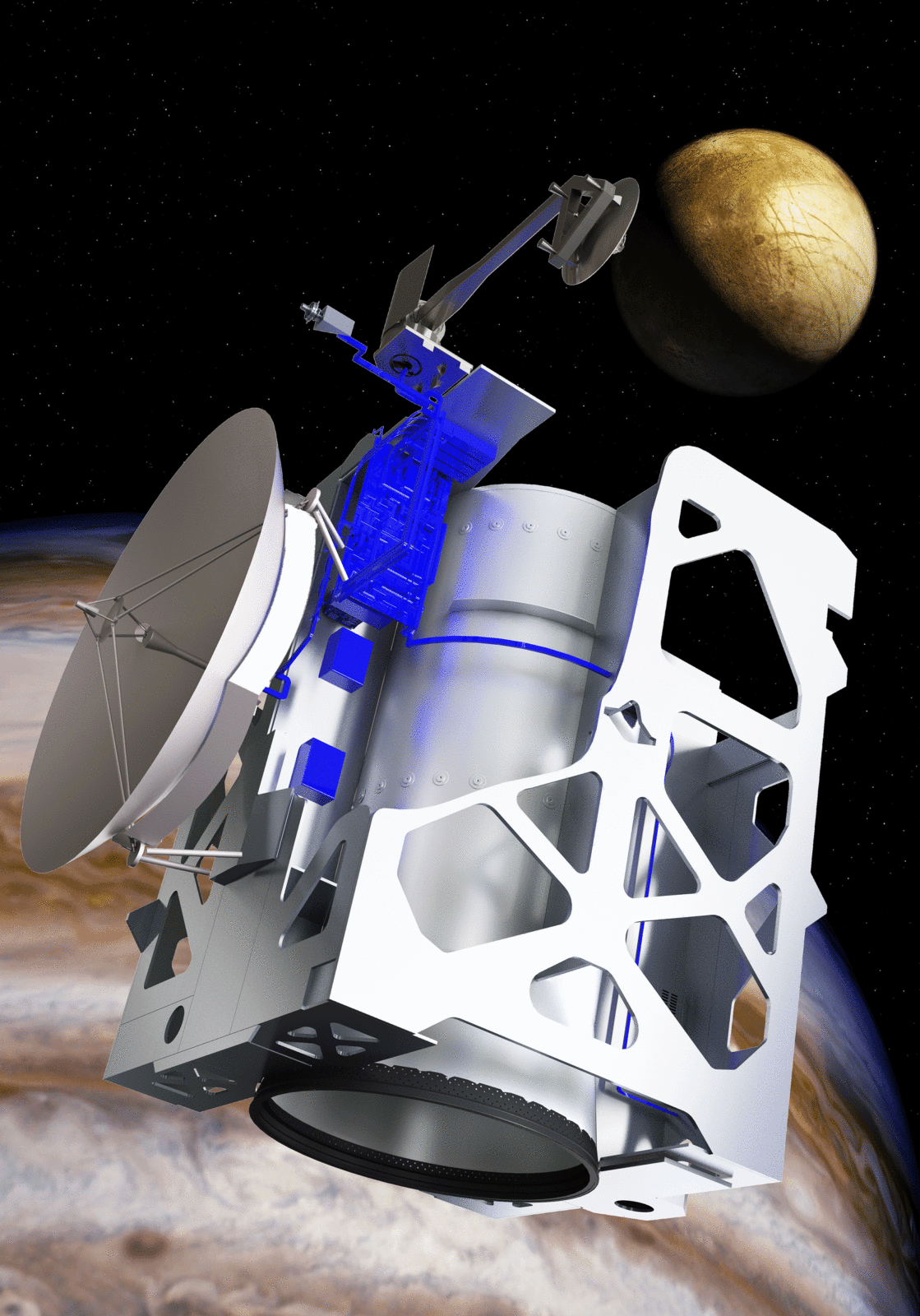
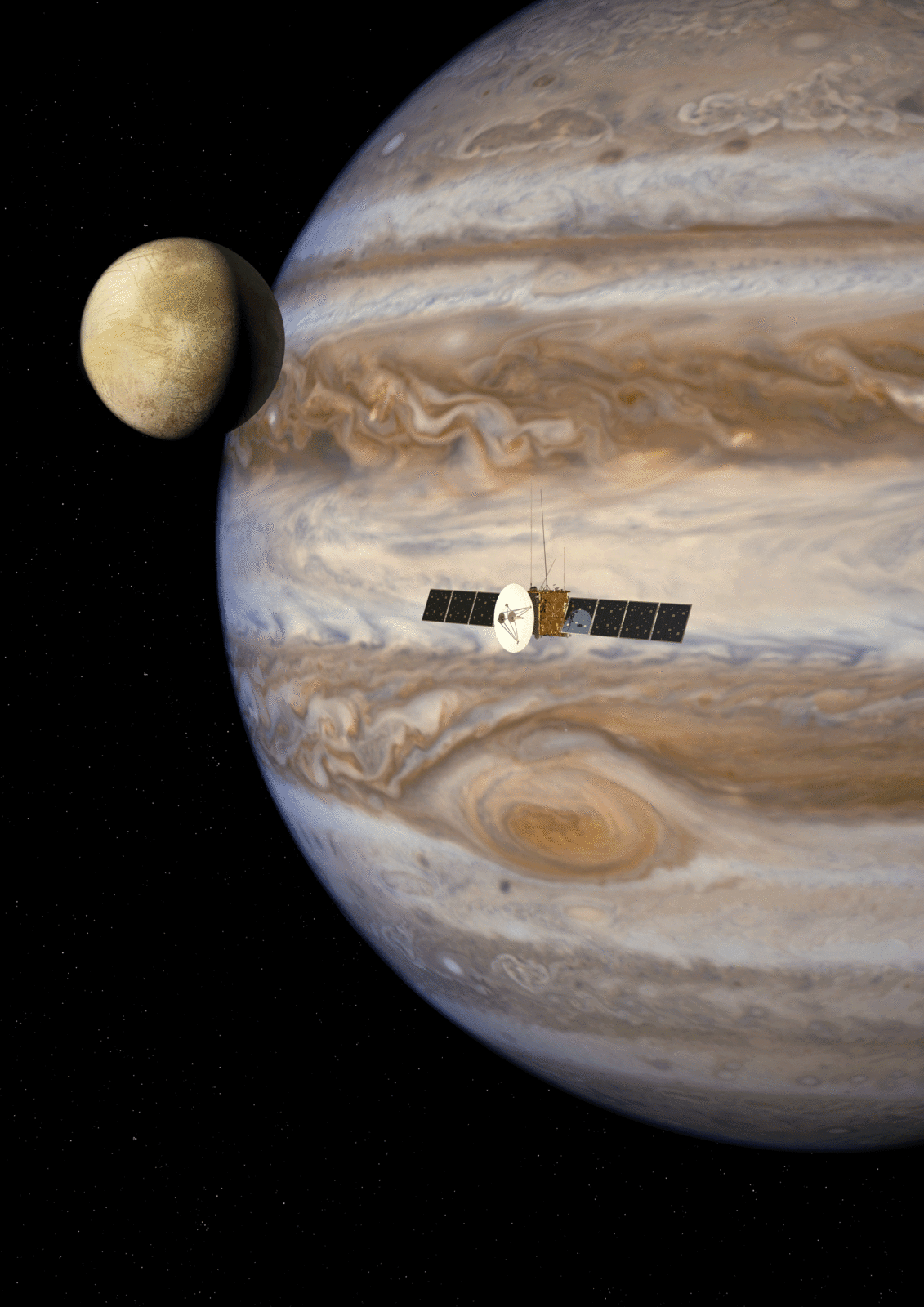
Timeline
- 2016: Signature of the contract between Airbus and Antwerp Space for supplying the JUICE communication subsystem
- 2023: Launch by the European Ariane rocket. Then the spacecraft cruises for 7,4 years towards Jupiter, based on Earth-Venus-Earth-Mars-Earth gravity assists.
- October 2029: After 6 billion km, JUICE performs several fly-bys of Jupiter, Callisto and Europa over a time span of 2,5 years.
- End 2032:The spacecraft is inserted into a final 500 km circular orbit around Ganymede, where it remains forever.
About the moons
Galileo Galilei discovered Ganymede, Europa and Callisto in 1610. They were the first group of objects found to orbit another planet. Apart from the Sun and the eight planets, they are among the largest objects in the Solar System. Ganymede is the largest moon in the Solar System and is even bigger than the planet Mercury.

